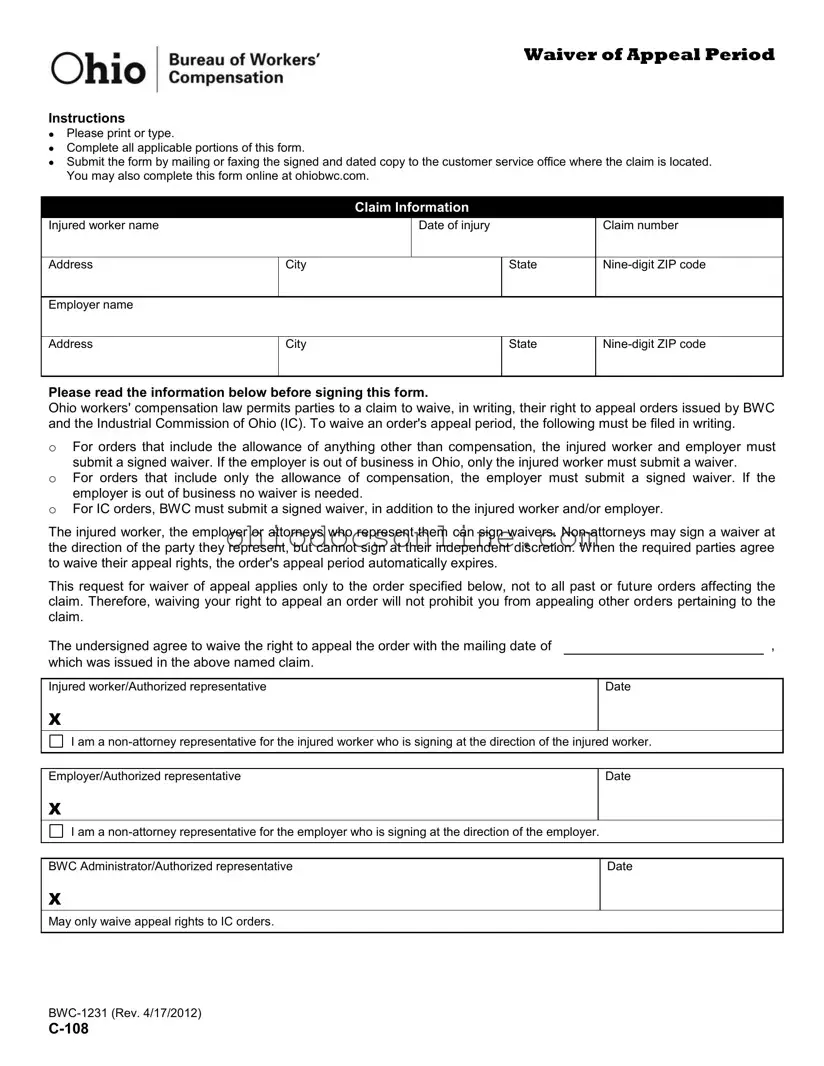C 108 Ohio Template in PDF
The C 108 Ohio form is a document used in the Ohio workers' compensation system that allows parties involved in a claim to waive their right to appeal certain orders issued by the Bureau of Workers' Compensation (BWC) and the Industrial Commission of Ohio (IC). By completing and submitting this form, injured workers and employers can expedite the resolution of their claims. Understanding the requirements and implications of this waiver is essential for all parties involved in the workers' compensation process.
Open Editor
